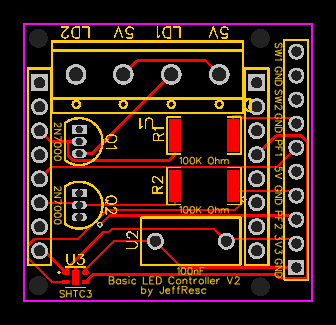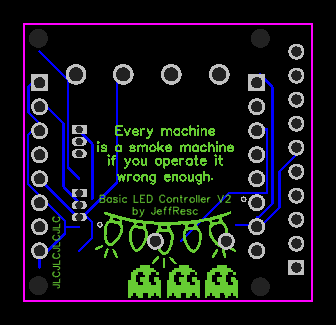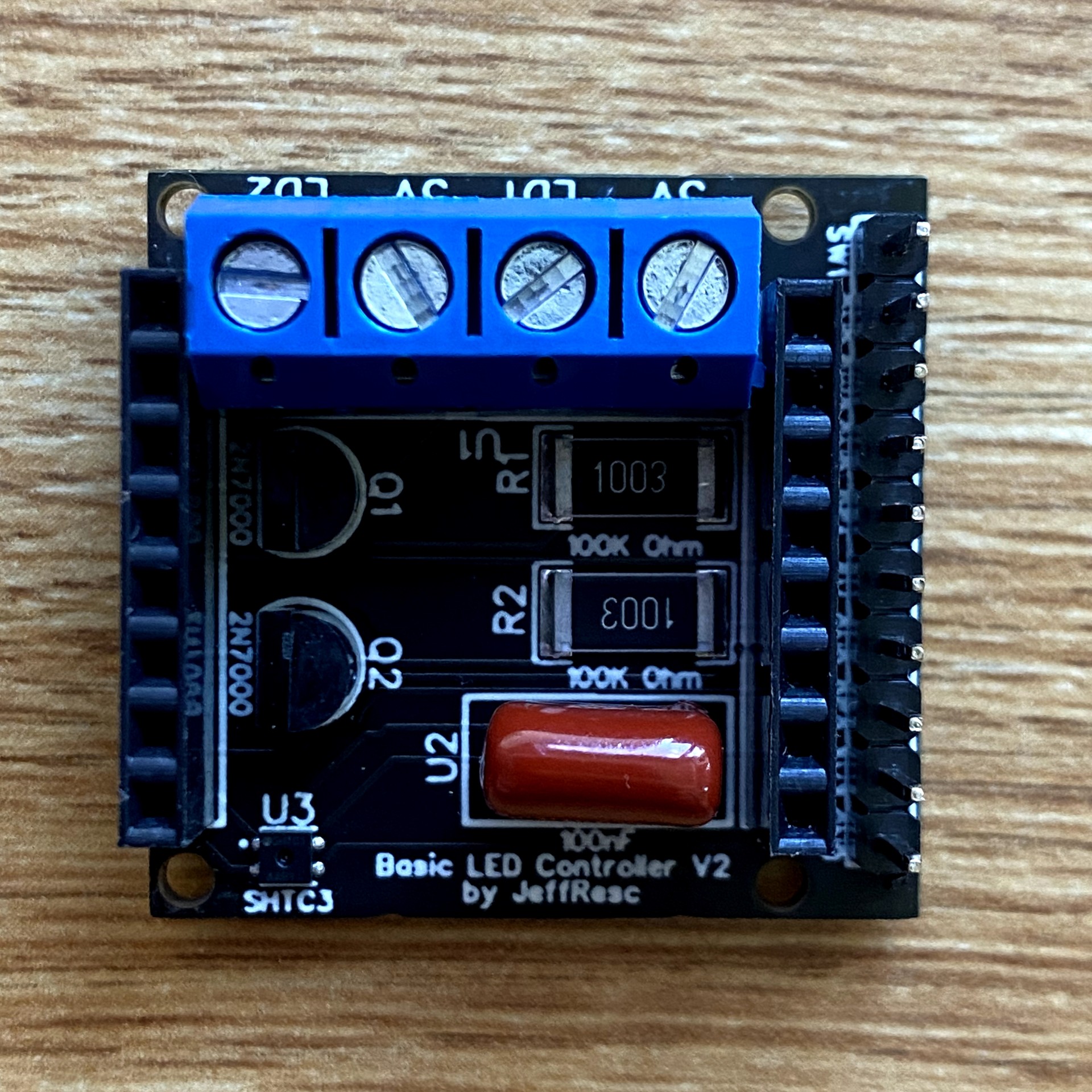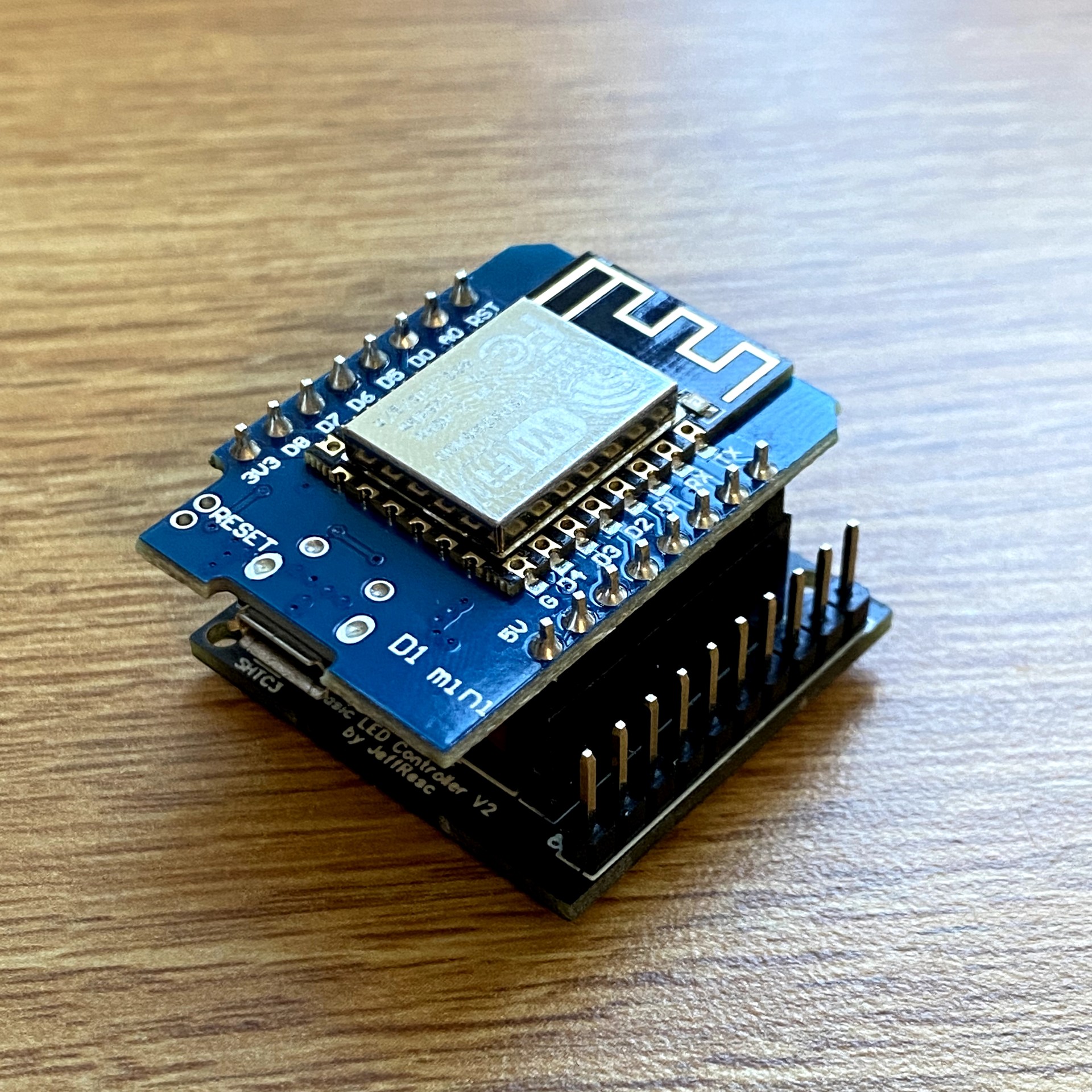
Creating a Smart LED Dimmer
April 28, 2022Table of Contents
Introduction
I frequently see cheap battery-operated monochrome string lights on clearance at stores locally such as Walmart. I wanted to be able to take advantage of these deals, but most of the lighting equipment that I own is "smart" and tied into the Home Assistant home automation system. I wanted to be able to bring these lights into my home automation system to control them more easily and tie them into my automations. There is the QuinLED controller, but it was a little overkill for these types of cheap monochrome string lights.
Solution Proposal
I was looking for a device to satisfy the following requirements:
- The device should be able to control at least one set of string lights (bonus points for multiple sets).
- The device should be able to control the brightness of the lights.
- The device should be able to control them via Home Assistant.
- Bonus points for extra headers for peripheral devices such as a PIR Motion Sensor.
- Bonus points for an onboard temperature sensor. They're cheap and can serve a variety of purposes for automations.
I created the following solution.
Schematic

PCB Layout


Parts List
These are the parts I decided to go with for my build. It was purely based on availability and cost. I was not familiar with many of these brands (other than Sensirion) before using them, but I have not had any issues with my device.
| Name | Designator | Footprint | Quantity | Manufacturer Part | Manufacturer | Supplier | Supplier Part |
|---|---|---|---|---|---|---|---|
| Header-Male-2.54_1x10 | H1 | HDR-TH_10P-P2.54-V-M-1 | 1 | Headers Pins2.54mm1*10P | LCSC | C57369 | |
| ESP32 Left | P1 | HDR-TH_8P-P2.54-V-F-1 | 1 | Female headerHDR1X8-2.54 | BOOMELE | LCSC | C27438 |
| ESP32 Right | P2 | HDR-TH_8P-P2.54-V-F-1 | 1 | Female headerHDR1X8-2.54 | BOOMELE | LCSC | C27438 |
| 2N7000 | Q1,Q2 | TO-92-3_L4.9-W3.7-P1.27-L | 2 | 2N7000 | CJ | LCSC | C9114 |
| 100K | R1,R2 | R2512 | 2 | RMC2512100K1%N | Tyohm | LCSC | C269364 |
| Screw Terminal Block | U1 | CONN-TH_JL301-50004U01 | 1 | JL301-50004U01 | JILN(锦凌) | LCSC | C1509680 |
| 100nF | U2 | CAP-TH_L10.5-W5.0-P7.50-D1.2 | 1 | - | Tongfeng | LCSC | C281835 |
| SHTC3 | U3 | SENSORM-SMD_4P-L2.0-W2.0-P1.00 | 1 | SHTC3 | Sensirion | LCSC | C194656 |
Other than that, you will also need a WeMos D1 MINI ESP32 or WeMos D1 ESP8266. The device is designed to work with either, but I have found it to work best with the ESP32 as it is more powerful and the ESP32 LEDC Output is a much better solution than the ESP8266 Software PWM Output.
Digital Render
This is a digital render of the board using MeshLab.

Software
For the software to control the onboard ESP32 (or ESP8266), I decided to go with ESPHome due to its ease of use, especially with Home Assistant. This is an example that I wrote which treats both LED outputs as one controller, that way two sets of lights can be controlled simultaneously. It can also read the value of the onboard SHTC3 and report back to Home Assistant.
substitutions:
devicename: bld-v2-01
friendly_name: Hallway Mirror Lights
esphome:
name: ${devicename}
platform: ESP32
board: wemos_d1_mini32
wifi:
ssid: !secret wifi_ssid
password: !secret wifi_password
fast_connect: true
ap:
ssid: ESP-${devicename}
password: !secret fallback_password
captive_portal:
web_server:
port: 80
auth:
username: !secret web_username
password: !secret web_password
api:
password: !secret api_password
ota:
password: !secret ota_password
safe_mode: True
i2c:
sda: GPIO21
scl: GPIO22
scan: true
id: bus_a
sensor:
- platform: shtcx
temperature:
name: ${friendly_name} Temperature
filters:
- lambda: return x * (9.0/5.0) + 32.0;
unit_of_measurement: "°F"
humidity:
name: ${friendly_name} Humidity
update_interval: 60s
light:
- platform: monochromatic
name: ${friendly_name}
output: LD1_LD2
id: main_light
gamma_correct: false
restore_mode: RESTORE_DEFAULT_OFF
output:
- platform: template
id: LD1_LD2
type: float
write_action:
- output.set_level:
id: LD1
level: !lambda return state;
- output.set_level:
id: LD2
level: !lambda return state;
- platform: ledc
id: LD1
pin: GPIO26
# You may want to configure a maximum power output depending on your particular lights, to ensure they are not damaged by being over-powered.
# max_power: 0.60
frequency: 1220Hz
- platform: ledc
id: LD2
pin: GPIO23
# You may want to configure a maximum power output depending on your particular lights, to ensure they are not damaged by being over-powered.
# max_power: 0.60
frequency: 1220HzFinal Results
I sent the final design files to JLCPCB for production. They are by far the cheapest PCB manufacturer to my knowledge, and I am satisfied with the build quality for these types of projects.

